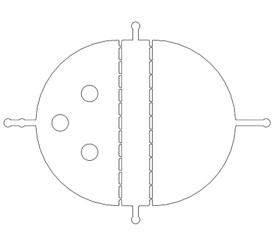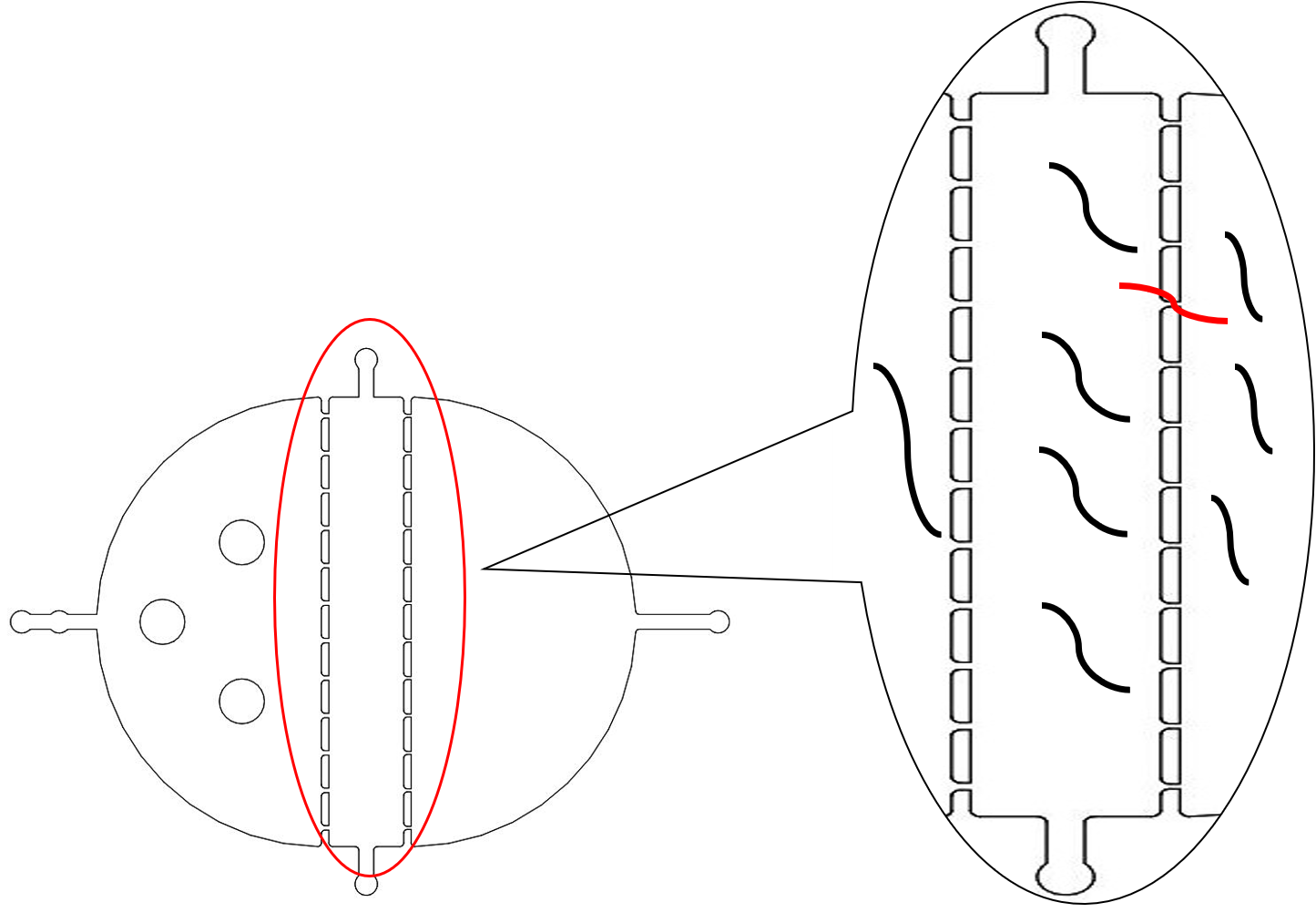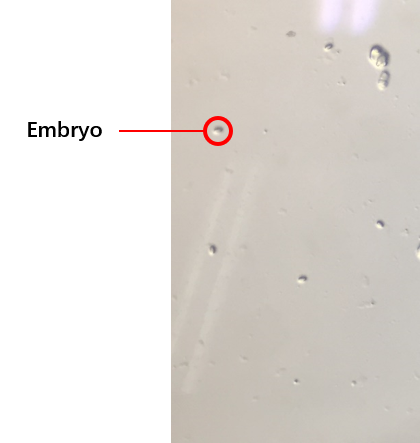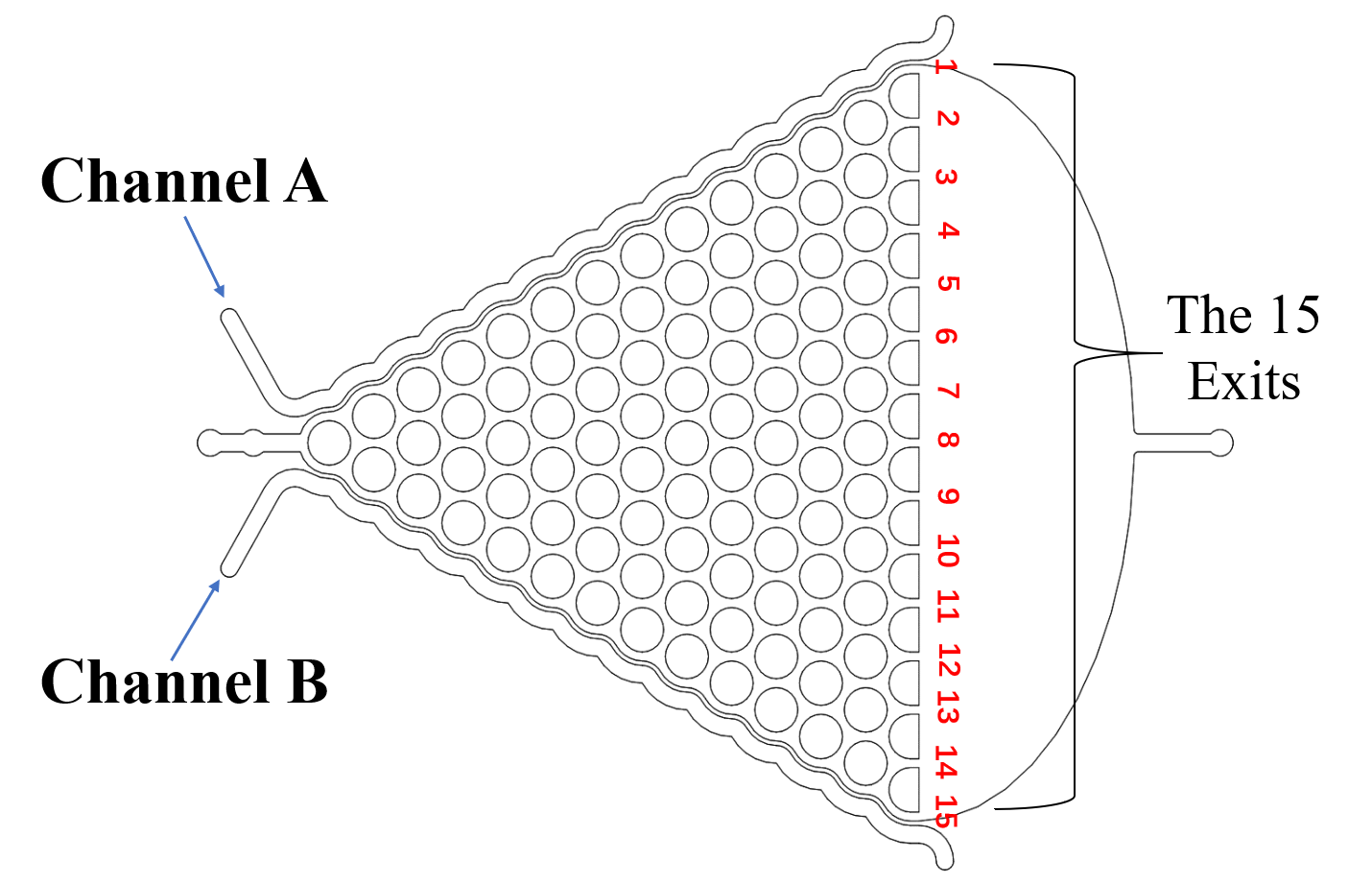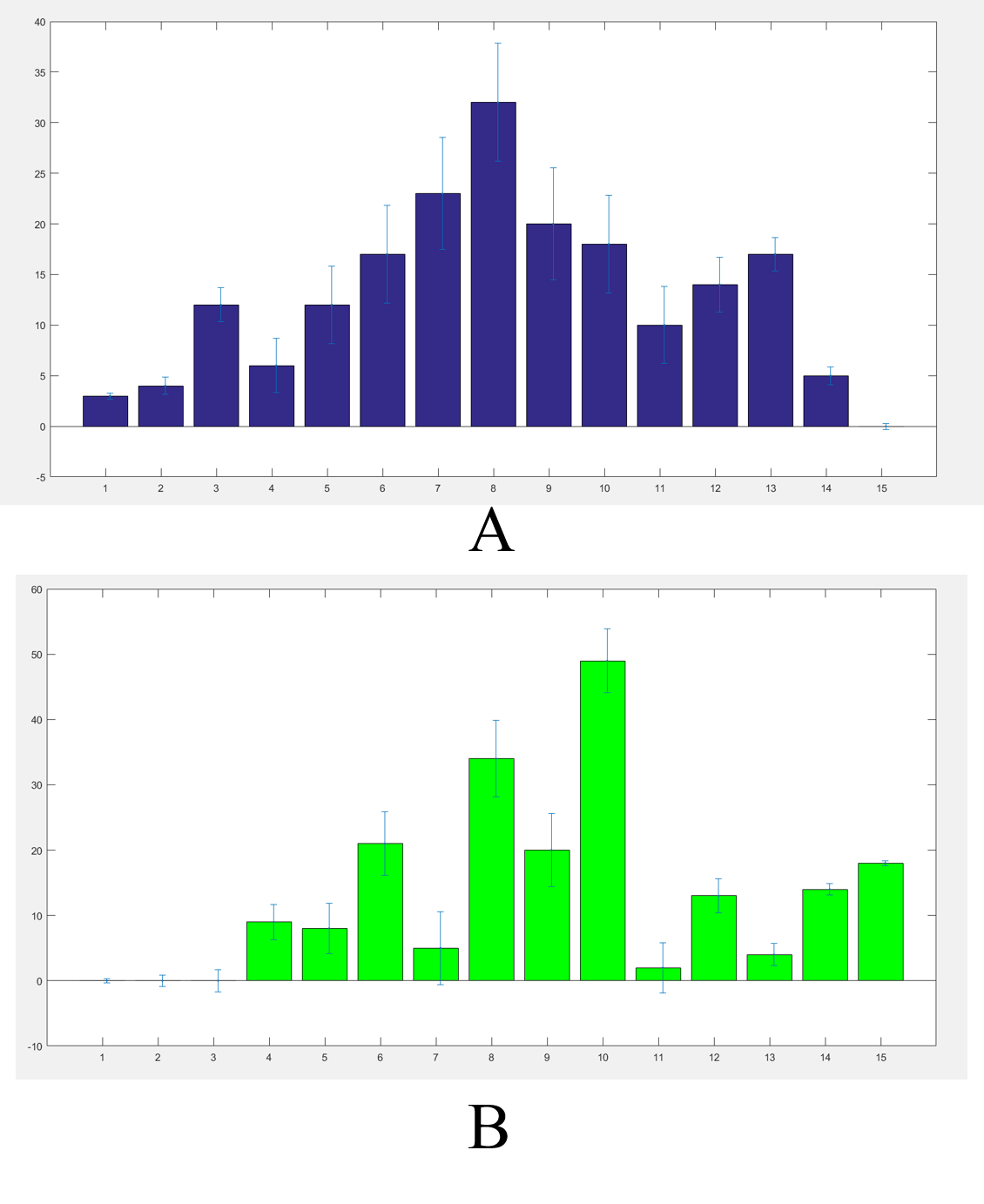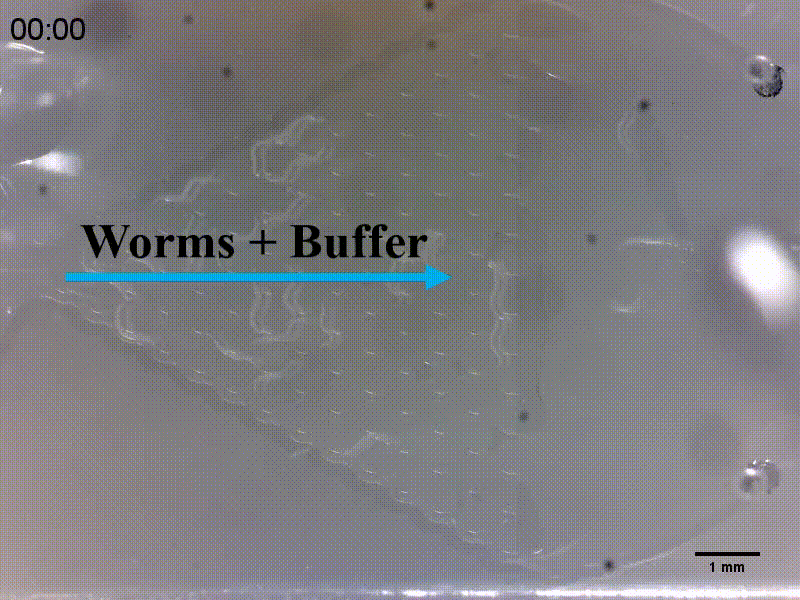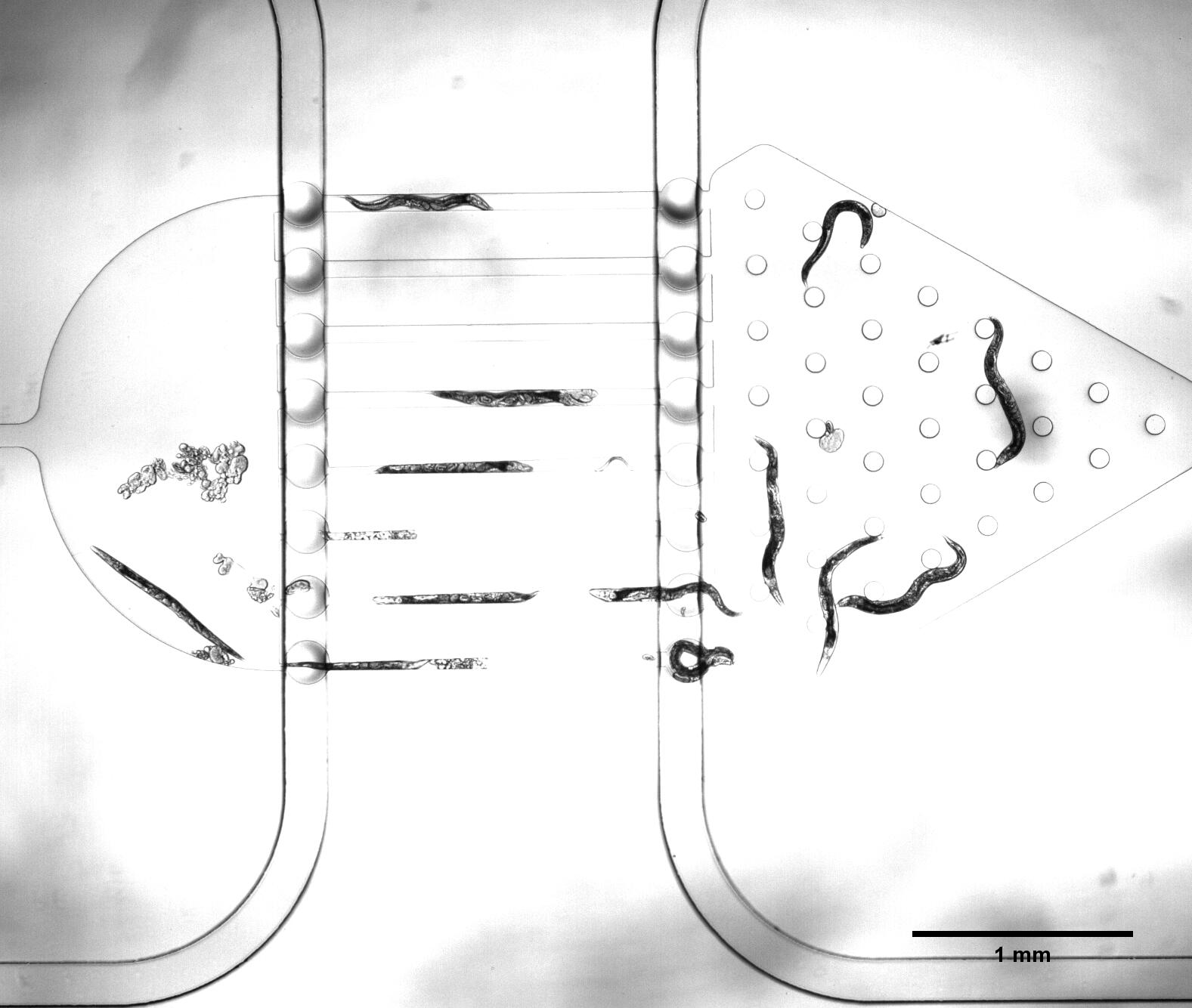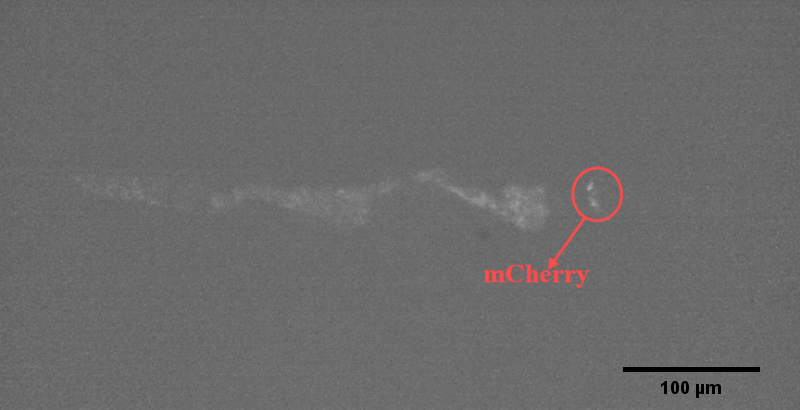Results
Project
Contents
Optical Experiments Resutls
Under construction
| | First | Second | |--|------|---------| | 3 | 43 | 4 |
Microfluidic Experiments Resutls
Microfluidics were divide into three parts: the selective chip; the Gaussian chip; and the immobilization chip.
Selective Chip
The selective chip was designed to select the Caenorhabditis elegans with the appropriate size (Fig.1).
We found that the chip only had 12 fences (Fig.2), but our next experiments needed a large number of the C. elegans which were at the same stage, so the efficiency of the selective chip was very low. In addition, the C. elegans have flexible body, some of the suitable size worms would still go through the second fences (Fig.2).
Then, the C. elegans' synchronization was utilized to get a large number of worms at the same stage. We got the embryos (Fig.3) from the old worms so that the worms would be at the same stage because of the hatches of the embryos were at the same time. We selected several conditions of the synchronization, finally, we could get the worms at the same stage. The synchronous rate ((The number of the worms at L4)/(All the worms)×100%) could reach to about 80%.
Gaussian Chip
The Gaussian chip (Fig.4) was designed to test if our exogenous genes will influence their olfactory receptor neuron pair (preference and repulsion to some chemical odors).
We got the worms’ distributions(Fig.5) after several experiments for the wildtype worms and our experimental worms with or without the chemicals (Fig.6).
Immobilization Chip
The immobilization chip was deigned to immobilize the C. elegans in worm traps or parallel channels for worm imaging and ethological experiments.
We could immobilize the worms in the worm traps (Fig.8) and watch the neuronal activity (Fig.9) successfully using fluorescence microscope (Nikon eclipse Ti). In addition, we could stimulate the Odr10::CoChR::GEM-GECO::mCherry worms to be active from the low state (Video.1). Unfortunately, we cannot see the clear neuro images in str1::Chrimson::GEM-GECO::GFP worms using fluorescence microscope but we can use confocal microscope to observe the neuro successfully.
References

